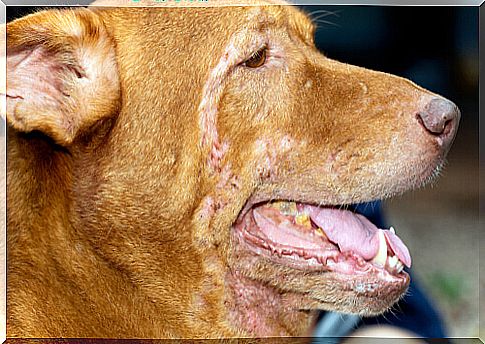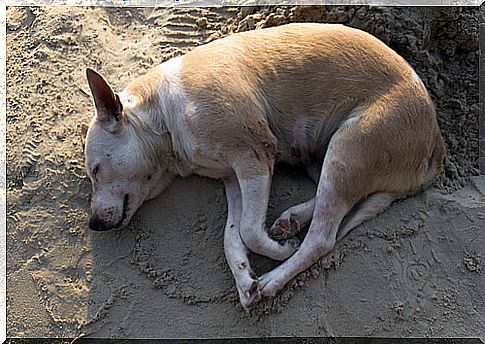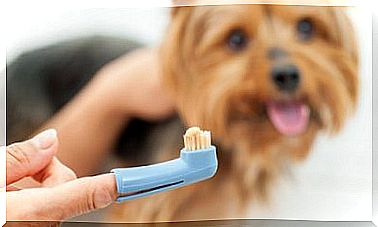Dermatitis In Dogs: How To Treat It

Although it may be more frequent in stray animals, the truth is that dermatitis in dogs appears due to various factors even in those who have a home. In this article we tell you more about this skin disease and how to treat it.
What is dermatitis in dogs?
It is a fairly common pathology in any breed, although some are more prone, such as the French Bulldog, Boxer, Golden Retriever, German Shepherd and Labrador.
Those dogs with long hair, or that live in hot and humid climates, increase the chances of suffering from dermatitis. This disease is characterized by irritating and reddening the skin in mild cases. If left untreated, it causes hair loss and infection.
Dermatitis in dogs can be caused by different factors and the signs are quite visible. The animal does not stop scratching, licking or biting, its skin becomes red and thickened, it has a constant bad smell, it loses hair, a kind of ‘dandruff’ appears and it has eruptions or scaly dermis. You may also have sores, hot spots, eczema, and ear infection.

Types of dermatitis in dogs
In order to offer you an adequate treatment, it is very important to determine what type of dermatitis the animal is suffering from. These are:
1. Atopic or allergic dermatitis
It is one of the most common, since it occurs when the animal has a certain genetic predisposition to develop allergies. Mites, flower pollen, or an insect bite can trigger this type of dermatitis.
The affected areas are the legs, face, belly, groin and armpits. Great itching, reddened skin, pimples, dryness and darkening of the affected area are the main symptoms. Veterinarians give medications to soothe the itch in the form of a cream or gel with antibacterial or moisturizing properties.
2. Fungal dermatitis
Some dog breeds with ‘folds’ or wrinkles, such as the Shar Pei, the Bulldog or the Neapolitan Mastiff, accumulate fat and moisture in that difficult to clean area. This encourages the appearance of fungi and, later, dermatitis.
The main symptoms are hair loss, dryness, a change in coat color, the appearance of purulent masses and a bad smell. The best treatment in this case is to apply an external cream that eliminates the fungus. It is necessary to finish the medicine to prevent these microorganisms from reappearing and, of course, prevent with thorough hygiene of the area.

3. Contact dermatitis
This is another type of dermatitis in dogs that can affect any breed. It appears when the animal comes into contact with a substance that is harmful to its health, such as disinfectants for floors, paint, chlorine for swimming pools, cleaners, etc.
The skin becomes inflamed, hardened and red, scabs appear and the affected person spends all the time scratching to the point of injury. There is no specific treatment for this dermatitis, with the exception of removing the substance that causes contact with our pet so as not to worsen the condition.
4. Seborrheic dermatitis
It is a fairly common type of dermatitis in dogs, and can appear from excessive bathing, as these weaken the natural fat layer of the skin. It can also be due to an allergy to a component of the food or the environment.
Seborrheic dermatitis causes the skin to become increasingly oily and give off a very strong odor. You can also see ‘flakes’ of skin as if they were dandruff and reddened areas due to intense scratching.
The treatment for this problem consists of baths with special products, which allow the dermis to regain its natural state. It is recommended, in turn, to pay attention to the type of feed that is given to the pet, because dyes or certain ingredients can worsen the picture.
Dermatitis in dogs needs to be treated with external medications, oral or injectable; it all depends on the type and severity of the case. Veterinarians can combine more than one remedy if they deem it necessary.








